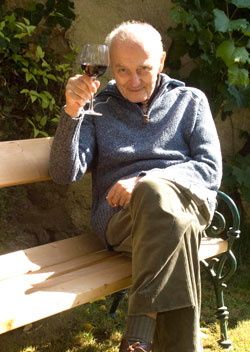Are we getting older before we marry? How much does age matter when we pick a partner? Read on for some fascinating thoughts and analysis on 30 years of marriage data from the Office for National Statistics (ONS).
The ages shown in this chart are not standardised and are therefore affected by changes in structure of the male/female population by age and marital status. Source: Office for National Statistics. Figures for 2010 are provisional.
Analysing the figures
Chart 1 above shows us several almost perfect correlations:
- Since 1981, the average age at marriage for both men and women has increased by about 6 and a half years.
- Any increase or decrease in age follows exactly the same pattern for men and women.
- The age increase stopped in 2008 and has decreased slowly since then.
- On average men are 2.65 years older than their partner.
Does age influence who we marry?
Chart 1 asks some interesting questions. On average, why is the bridegroom consistently older than the bride? This has been the case every year for at least 30 years, with almost exactly the same precision each year. This is telling us that age plays a considerable role when we are selecting a partner. But why might this be? The most obvious explanation seems to me that men prefer a more youthful wife, and women prefer a maturer husband. But is the average husband consciously making a choice for youthful beauty, or are they instead unconsciously choosing a younger wife with better childbearing potential? And does the wife know they want an older husband? If we analyse this data further we may get some clues. Let’s narrow it down to widows and widowers remarrying, who will be much older on average. Will this 2.65 year age gap still be there?
The ages shown in this chart are not standardised and are therefore affected by changes in structure of the male/female population by age and marital status. Source: Office for National Statistics. Figures for 2010 are provisional.

Chart 2 shows that the average age gap has more than doubled, to about 5.5 years! It has again remained like this consistently for a period of 30 years, meaning we can be certain that as we get older, the age of our partner becomes a much more important factor when we are deciding who to marry. But is this a conscious or unconscious decision? Is something working behind the scenes in the male brain, desperately crying out for a wife who can still carry a child? Or are men deliberately choosing an even younger, prettier wife? Either argument could reasonably explain the increasing age gap from the male perspective, but what about the female one? If it’s a conscious decision to pick a better father figure, with more life-experience, and a more mature character, does this really matter when the remarrying husband is 61 years old on average? Surely the difference in maturity and the ability to provide is much less pronounced between a 63 year old male and a 60 year old male than between a 23 year old and a 20 year old. If the widowed female is consciously making a decision about the male, age doesn’t seem as important when they are older. Yet the data says the exact opposite – age becomes more important.
Now for the eureka moment. If it’s the unconscious female mind at work, then age would still be important, as a woman would need a male older than themselves to be that father figure, which is why the age gap doesn’t decrease. In fact, it increases. If we take it that, like the female, the male also makes an instinctive decision on their partner, we can explain this increase through the remarrying male’s unconscious desire for a child-bearing female, for which he has to pick a much younger partner than he would if he was younger. This is strong evidence that the age of our partner matters a lot, yet we have no real say in the matter!
Not convinced? This hypothesis may soon have further evidence to support it. As more women pursue a career, and the female starts to earn the same as the male, a very recent occurrence even in the Western world, this would lessen their need for a partner who could better provide for the family. In turn, this would make the age of the male less important if it’s a decision the female is actively involved in, and would show in a shrinking of the age gap. The data does not show this happening yet. However, if something in the female mind is unconsciously choosing an older male, then this age gap would be preserved, further proving that there is a strong unconscious force at work when females pick a partner, making it likely the same case for males too.
Female equality in the workplace is still just a handful of years old (you could even easily argue it’s not yet 50/50), so not many of these career females will have married yet. It will be interesting to see if this has an effect on the chart over the next decade or so.
Do we no longer get married because society tells us to?
Another tantalising question Chart 1 seems to answer – whether the average age of marriage has plateaued. The social pressures behind marriage have all but disappeared in recent times, which explains the marked increase in marriage age over the last 30 years. Now very few of us get married because we have to, as society in general no longer looks down upon us if we do not. Instead, we get married because we want to, and we are ready for it. Perhaps the plateauing, or small decrease, has largely signalled the end of getting married because of social pressure.
Where are the biggest changes happening?
Charts 3 and 4 below show us where the biggest changes have taken place. There has been a massive drop in the number of 16-19 year olds getting married, from 18,542 males in 1981 to just 820 in 2010, a huge 85% reduction. The curves in the charts are also much gentler in recent years, showing a big increase in variation of marriage age. In 2001 and 2010 almost as many 30-34 year old males got married as 25-29 year old males. Compare this to 1981, where almost 70% of male marriages and 75% of female marriages were solemnized by the age of 29. That urgency to get married as soon as we’re an adult has all but disappeared in 20 to 30 years.
Source: Office for National Statistics. Figures for 2010 are provisional.
Both charts show an increase of around 30% in the number of marriages between the ages of 25 and 60 since 1981.
Source: Office for National Statistics. Figures for 2010 are provisional.
What do you think?
How old is your own partner? What do you think this means about humans? What can you see happening in the future? I’d love some opinions on my analysis and thoughts above, as well as any other good theories. Please comment below if you have something to add.

1 Comment
I think the reason why we have an age gap simply boils down to us being like any other creature on this planet that we are animals. Women look for a stronger male that will be able to provide the basics: shelter, food, protection (for themselves and their children) and stability this can be related to modern day life. So therefore an older male on average will be better equipped to provide these basic requirements. As for men looking for a younger wife i dont think it has anything to do with beauty. Taking it back to us being like any other animal the younger the women the more chance to bear children and less chance of complication in childbirth (therfore the male has more chance to spread his genes) which simply breaks down to younger women being a healthier mate.